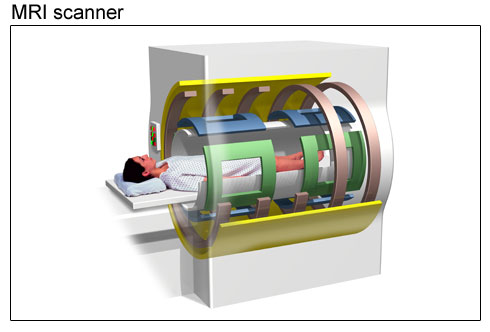X-RAY and CT Scans ga-68-psma-pet/ct psma pet-ct for prostate cancer 3 Tesla MRI is a way of getting pictures of various parts of ours body without the use of X-RAY, unlike regular x-rays pictures and CT Scans. imaging psma pet scan procedure psma pet scan cost
Scanner consists of a large and very strong magnet in which the patient lies. A radio wave antenna is used to send signals to the body and then receive signals back. These returning signals are converted into pictures by a computer attached to the scanner. MRI is quite safe in the majority of patients. Certain patients may not be able to have an MRI.

MRI scan facts
- MRI scanning uses magnetism, radio waves, and a computer to produce images of body structures.
- Scanning is painless and does not involve x-ray radiation.
- Patients with heart pacemakers, metal implants, or metal chips or clips in or around the eyes cannot be scanned with MRI because of the effect of the magnet.
- Claustrophobic sensation can occur with MRI scanning.
During the test
The MRI machine looks like a tube that has both ends open. You lie down on a movable table that slides into the opening of the tube. A technologist monitors you from another room. You can talk with the person by microphone.
Machine creates a strong magnetic field around you, and radio waves are directed at your body. The procedure is painless. You don’t feel the magnetic field or radio waves, and there are no moving parts around you.
During the MRI scan, the internal part of the magnet produces repetitive tapping, thumping and other noises. Earplugs or music may be provided to help block the noise. If you are worried about feeling claustrophobic inside the MRI machine, talk to your doctor beforehand. You may receive a sedative before the scan.
In some cases, a contrast material, typically gadolinium, may be injected through an intravenous (IV) line into a vein in your hand or arm. The contrast material enhances the appearance of certain details. The material used for MRIs is less likely to cause an allergic reaction than the material used for CT scans.
An MR can last up to an hour or more. You must hold very still because movement can blur the resulting images.
During a functional MRI, you may be asked to perform a number of small tasks — such as tapping your thumb against your fingers, rubbing a block of sandpaper or answering simple questions. This helps pinpoint the portions of your brain that control these actions.

